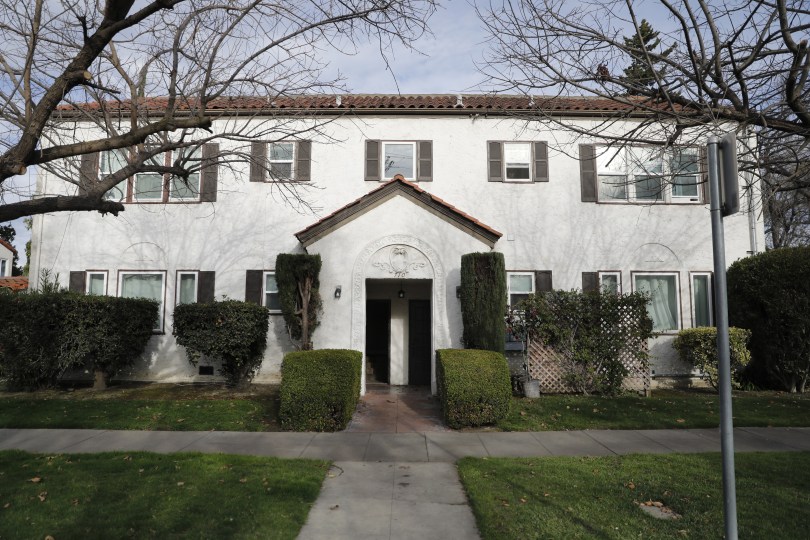Kevin Zwick, CEO of United Way Bay Area and Board Chair at SV@Home, shares how an Opportunity Housing home type allowed his family to achieve Bay Area homeownership on a middle-income salary. “The first home my wife and I purchased was a townhome in a newly built fourplex in Albany on a 6,000 square foot lot that used to have a single-family home on it. Buying a unit in this fourplex was the only way my family and I could afford a home in a neighborhood within walking distance to schools, parks and shopping.” Right now, San Jose’s extensive single-family zoning means it is illegal to build multi-family units like apartments buildings, duplexes, triplexes or fourplexes — units that would provide an affordable, safe, stable environment for families who might not be able to afford a detached home. These restrictive zoning laws were established centuries ago to prevent Black, Asian, and immigrant communities from threatening the “character” of majority-white neighborhoods. Now San Jose has the chance to consider changes that could begin to undo the racist and exclusionary history of restrictive zoning.
BY: Kevin Zwick┃The Mercury News
PUBLISHED: August 11, 2021 at 5:03 am
Like many parents across California, raising my family in a home we owned — one we could call ours — felt like a pipe dream. The homes my wife and I initially explored in Albany 15 years ago with the well-kept neighborhoods and access to good schools, were hundreds and thousands of dollars outside our price range.
With my nonprofit salary and my wife working in HR for local companies, we simply could not afford the then-$800,000+ price tag that came with detached, single-family homes. This is a dilemma that is unfortunately becoming too common for many families in the Bay Area, especially for communities of color and low-income communities. A dilemma largely spurred by single-family zoning.
Single-family zoning means it is illegal to build multi-family units like apartments buildings, duplexes, triplexes or fourplexes — units that would provide an affordable, safe, stable environment for families who might not be able to afford a detached home. These restrictive zoning laws were established centuries ago to prevent Black, Asian, and immigrant communities from threatening the “character” of majority-white neighborhoods.
This allowed developers and city planners to use socio-economic status as a proxy for race in excluding specific groups from living in certain communities. And they still prevent families of color and families of certain income levels from having the same access to healthy, stable, neighborhoods. According to a report from UC Berkeley’s Othering and Belonging Institute, an average of 81% of the Bay Area’s residential land is zoned for single-family development. In San Jose, it’s as high as 94%.
This impacts all of us. Not only does this prevent communities from addressing past racial segregation, but when cities restrict development to one household per parcel, that severely constricts the potential supply of housing in a given area— thereby inflating the price of housing everywhere. Reforming restrictive zoning laws is one opportunity to increase access to stable and secure housing for all our communities in the Bay Area.
Fortunately, several cities across the region are beginning to confront the racist and exclusionary history of single-family zoning. Earlier this year, the city of Berkeley became the first Bay Area city to reform single-family zoning, coming full circle in its journey as the originator of the practice. Oakland is close behind, having passed a resolution to study the impact of allowing duplexes, triplexes, and fourplexes on lots currently zoned for single family residences. San Jose is considering a similar policy that would allow up to fourplex development in neighborhoods of high opportunity.
The first home my wife and I purchased was a townhome in a newly built fourplex in Albany on a 6,000 square foot lot that used to have a single-family home on it. Buying a unit in this fourplex was the only way my family and I could afford a home in a neighborhood within walking distance to schools, parks and shopping.
We shared our fourplex with a mix of nonprofit staff, city planners, university researchers, and software engineers. It was home to kids, dogs, and families who no longer had to compromise on location in order to afford a stable home. The fourplex, which blended into the neighborhood, provided an economical and environmentally friendly option for our four households. This is the type of community I’d love to see here, in my current home of San Jose.
United Way Bay Area sees opportunity housing as a critical tool to increase equitable housing options across all income levels. As such, we strongly urge San Jose’s City Council to allow opportunity housing in all neighborhoods across the city. Furthermore, as a current homeowner in San Jose, and a previous owner of opportunity housing, I stand with the cities of Berkeley, Oakland and San Jose in their efforts to reform the outdated practice of single-family zoning and encourage you to join us in that effort.
Kevin Zwick is CEO of United Way Bay Area.

